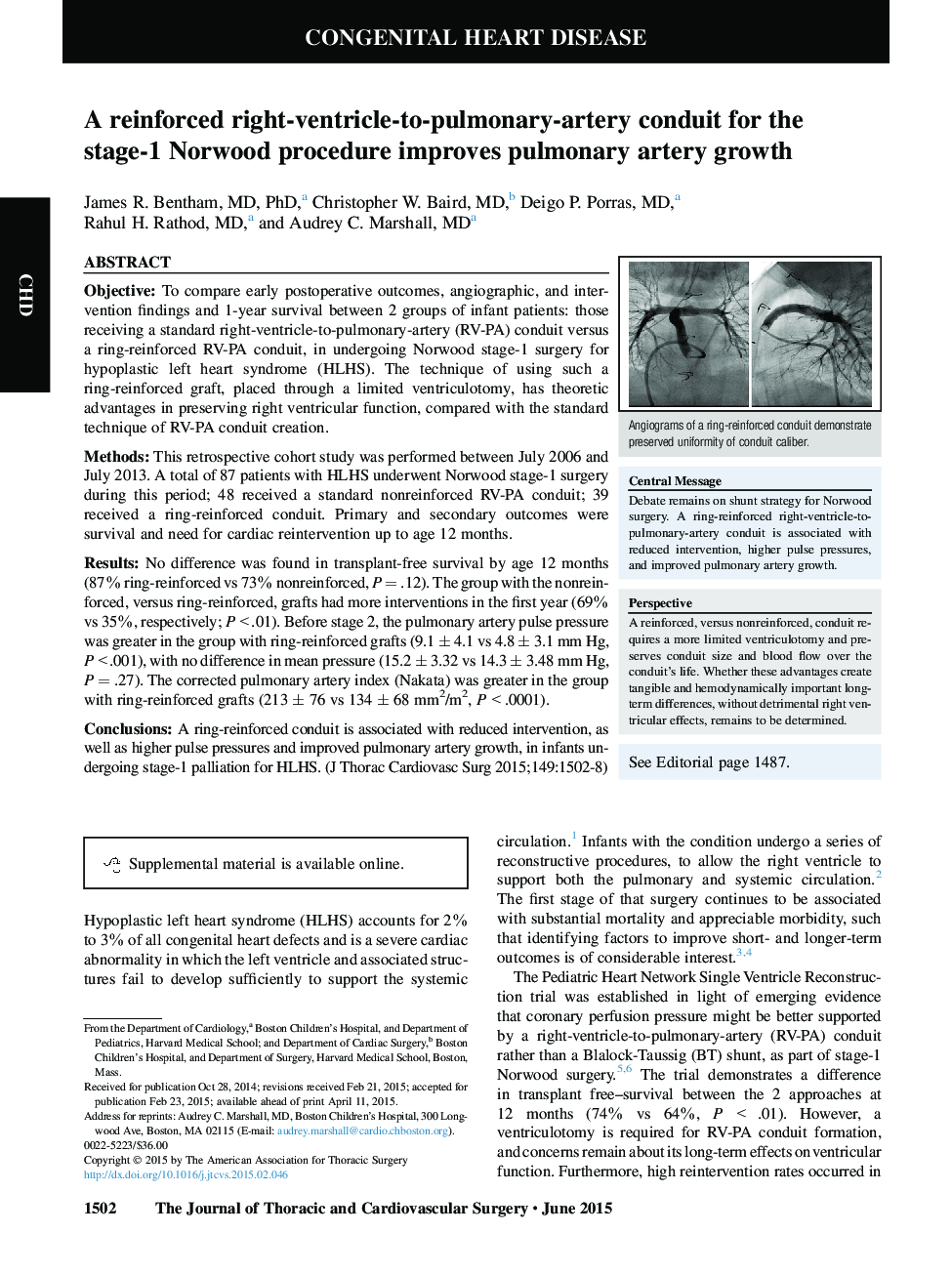| Article ID | Journal | Published Year | Pages | File Type |
|---|---|---|---|---|
| 5989073 | The Journal of Thoracic and Cardiovascular Surgery | 2015 | 8 Pages |
ObjectiveTo compare early postoperative outcomes, angiographic, and intervention findings and 1-year survival between 2 groups of infant patients: those receiving a standard right-ventricle-to-pulmonary-artery (RV-PA) conduit versus a ring-reinforced RV-PA conduit, in undergoing Norwood stage-1 surgery for hypoplastic left heart syndrome (HLHS). The technique of using such a ring-reinforced graft, placed through a limited ventriculotomy, has theoretic advantages in preserving right ventricular function, compared with the standard technique of RV-PA conduit creation.MethodsThis retrospective cohort study was performed between July 2006 and July 2013. A total of 87 patients with HLHS underwent Norwood stage-1 surgery during this period; 48 received a standard nonreinforced RV-PA conduit; 39 received a ring-reinforced conduit. Primary and secondary outcomes were survival and need for cardiac reintervention up to age 12 months.ResultsNo difference was found in transplant-free survival by age 12 months (87% ring-reinforced vs 73% nonreinforced, P = .12). The group with the nonreinforced, versus ring-reinforced, grafts had more interventions in the first year (69% vs 35%, respectively; P < .01). Before stage 2, the pulmonary artery pulse pressure was greater in the group with ring-reinforced grafts (9.1 ± 4.1 vs 4.8 ± 3.1 mm Hg, P < .001), with no difference in mean pressure (15.2 ± 3.32 vs 14.3 ± 3.48 mm Hg, P = .27). The corrected pulmonary artery index (Nakata) was greater in the group with ring-reinforced grafts (213 ± 76 vs 134 ± 68 mm2/m2, P < .0001).ConclusionsA ring-reinforced conduit is associated with reduced intervention, as well as higher pulse pressures and improved pulmonary artery growth, in infants undergoing stage-1 palliation for HLHS.
